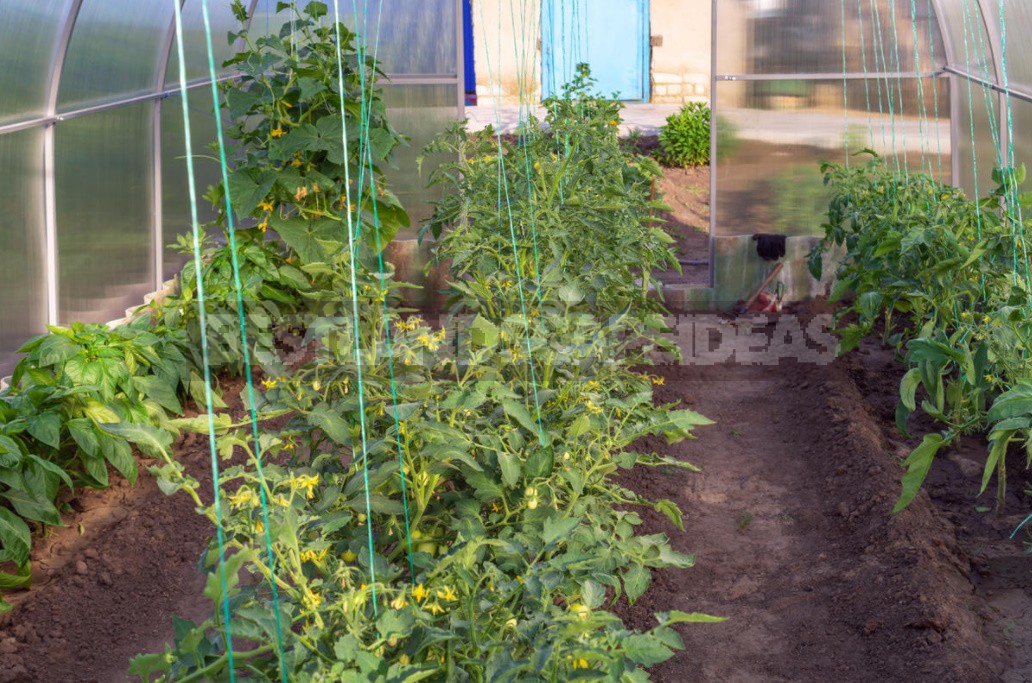
Who said that strictly one crop should be grown in a greenhouse? Yes, such recommendations are quite common and have a certain basis… However, an avid summer resident has also learned from her own experience that different types of plants can be perfectly combined in a greenhouse. It turns out a highly efficient and very intensive use of a small area of protected soil to the delight of the owner.
Of course, you can’t plant everything in a row-you can’t sow, nothing good will come of it. We need a clear system of division by time, cultures and the space they need.
In this publication, we will consider the sequence of settling a greenhouse — when and which crops should be sown or planted. Schematically, it is shown in the figure below. Initial data: arched greenhouse, width-3 m, length-6 m, 3 beds. The work schedule corresponds to the climatic conditions of the North-West, with the advance to the south, the dates will shift to earlier dates.
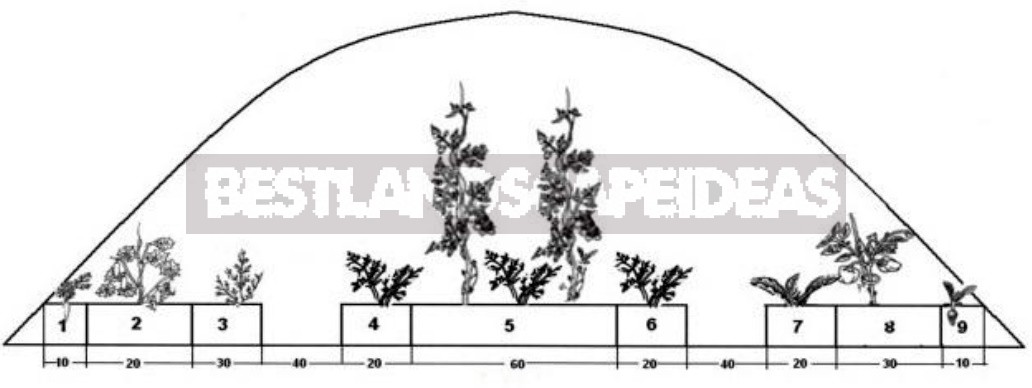
End of April
At the end of April — the very beginning of May, prepare a trench for sowing cucumbers, retreating from the wall of the greenhouse 25 cm. Cover it with a strip of black spunbond (in order not to cut it, just roll it into several layers). At the very wall, push a 2 cm deep groove with the edge of the board and sow (as if salting food) a row of early carrots along the spunbond strip, mixing 1 teaspoon of seeds and AVA fertilizer powder with 0.5 cups of dust from drunk tea or coffee.
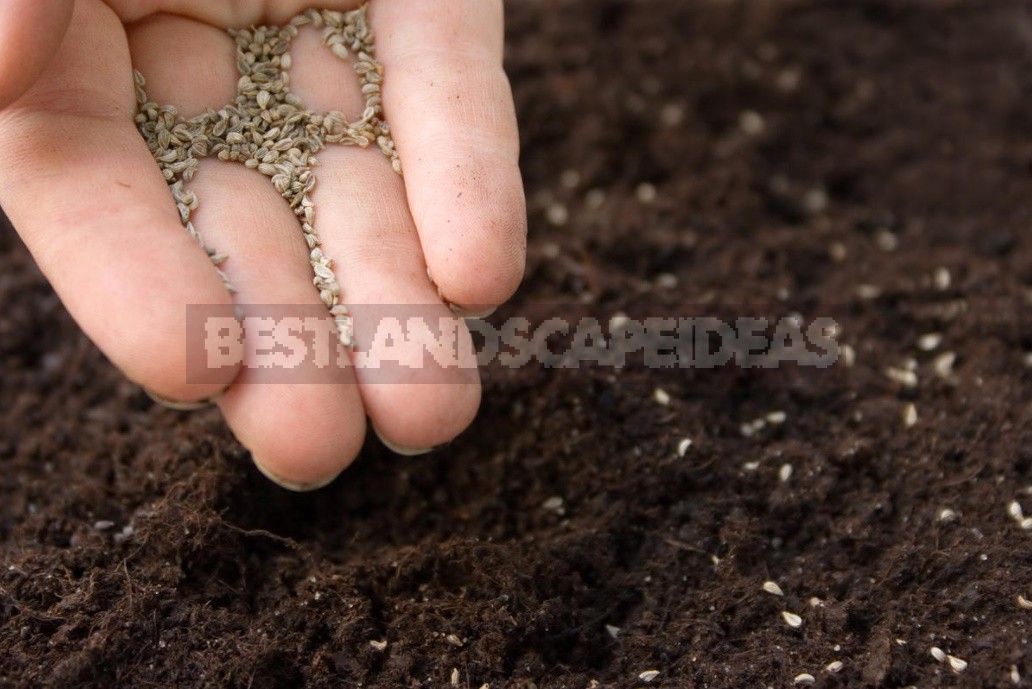
Bury and compact the crops (you can not put ash under carrots instead of AVA, otherwise the root crop will become multi-tailed). Cover the bed with white spunbond (lutrasil). On the opposite side of the greenhouse, similarly prepare a trench for transplanting pepper seedlings, retreating from the wall 25 cm. Along this trench, at the very wall, plant radish seeds one by one in 1 row, simply pressing them with your finger to a depth of 2 cm, 5-6 cm apart (about 40 pcs. by 6 m). Stepping back from the edge of the bed 20 cm, make 2 furrows along the entire length of the bed with the edge of the board — sow lettuce seeds in the same way as carrot seeds. Now bury everything and cover it with a white spanbond.
Early May
On May 5-10, sow cucumber seeds along the carrot crops on the prepared trench — 2-3 seeds in each nest. Nests should be made 25 cm apart from each other (24 nests, in each of which you will leave one plant in the future, that is, 24 cucumbers). In order not to fall asleep a row of carrots, first cover it by turning off the black spunbond from the place of sowing cucumbers. Cover the sown cucumbers with a transparent film (or place bottles with the bottom cut off over the nests).

On the remaining place along the edge of the bed, plant the seedlings of bush dill grown at home at a distance of 40 cm from each other (a total of 15 plants). Now remove the black spunbond from the bed and cover it with two layers of white spunbond.
Mid-May
On May 10-15, plant tomato seedlings in 2 rows in the center of the middle bed. Arrange the rows 30 cm from each other, and the plants-30 cm from each other in each row. Make the landings in a staggered order. In each row you will have about 20 plants, that is, a total of 40 tomato bushes.
Tie each bush to a stick stuck next to the tomato stalk, slightly higher than the seedlings. So that the spunbond, which you will cover the garden, does not cling to the ends of the sticks, put beer cans or 300-gram plastic bottles from under drinks on them.
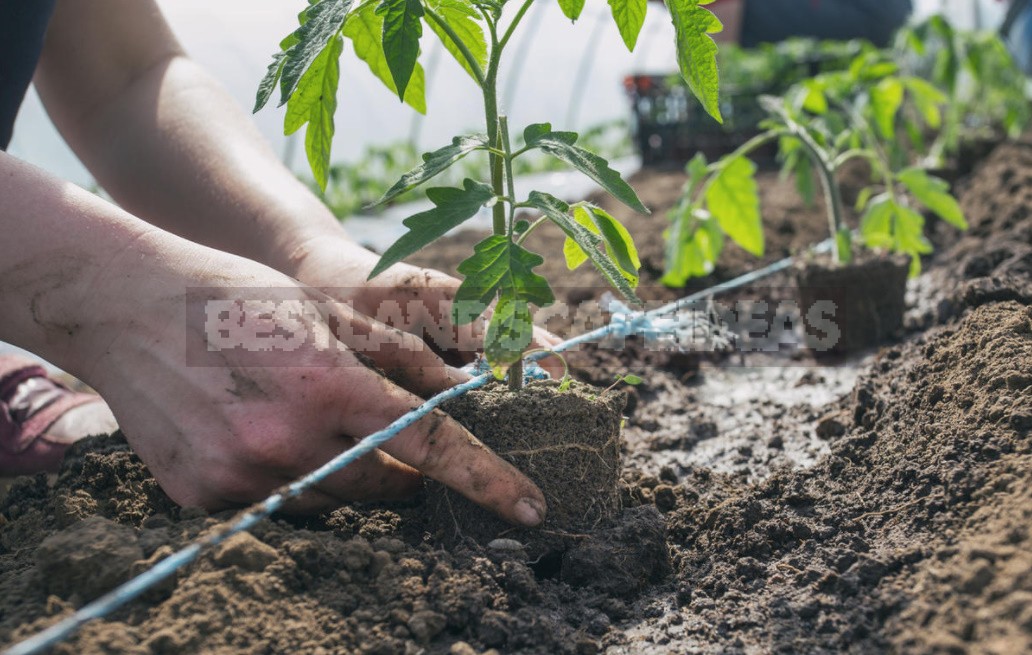
Mulch the tomatoes with newspapers. You have a 30 cm strip left on each side. Stepping back from the ends of the bed about 10 cm, plant the seedlings of leaf parsley grown at home after 30 cm. Only 6 bushes will be more than enough for you — 3 from each end.
Take the remaining space behind the parsley by sowing seeds of annual flowers. On the other side of the tomatoes, plant cabbage and late beet seeds individually in separate “apartments”, sow dill in the remaining place. Now cover the entire bed with a double white spunbond.
Lettuce in the garden with radishes should be planted, and it is even better to eat it, thinning it so that after planting the pepper, the lettuce bushes are at a distance of 30 cm from each other.
End of May
On May 25-30, after you have removed the radish, sow basil, marjoram and cilantro in this place. In order not to stain the salad, pre-cover it with newspapers. Pepper and eggplant will be planted at a distance of 30 cm from each other (a total of 20 plants). Remove the cover from the salad and cover the entire bed with a double white spunbond. If you need watering of plants planted during May, then do it directly on the spunbond. Do not forget to remove the film or bottles from the seedlings of cucumbers, but leave the white spunbond on the whole bed until the frosts are over.
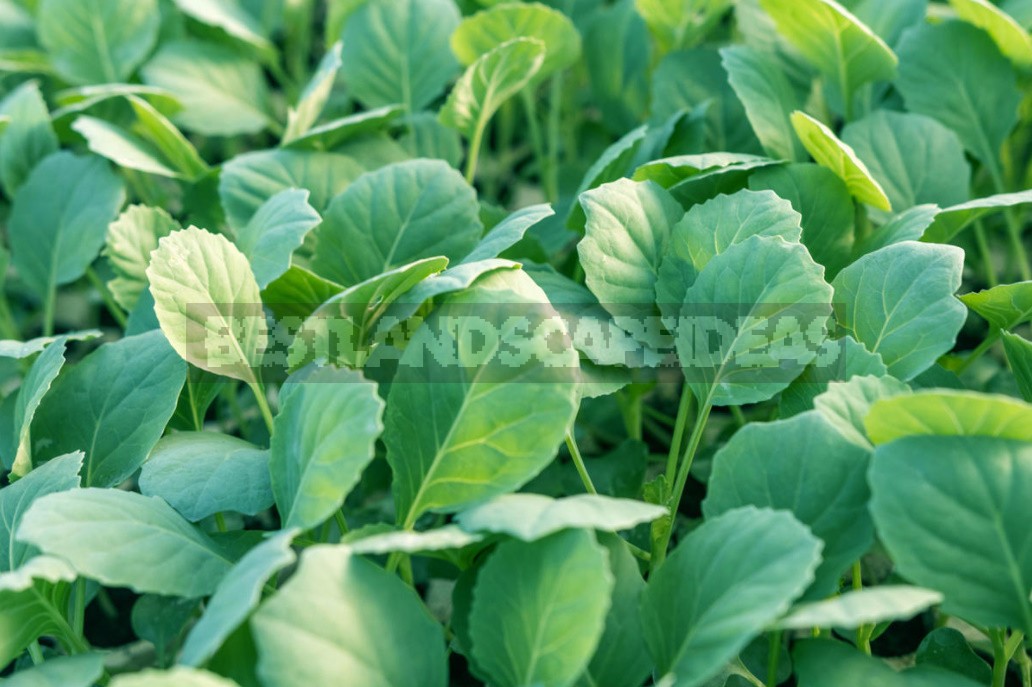
At the end of May, transplant cabbage seedlings into the open ground, and plant beet seedlings on the sides of the bed with this culture. You can plant seedlings of root celery on the ends of the cabbage bed. Cabbage is planted in 2 rows according to the scheme 40 × 40 cm, and between its rows we plant tall marigolds. Just in case, cover all the plantings with double lutrasil, which you can already pick up from the greenhouse.
After the end of the frost, transplant the seedlings of flowers into the ground, and sow green onion seeds on a feather in the vacant place — just as you sowed early carrots. And on the other side of the bed with tomatoes, sow root parsley — just like carrots. After you eat the salad, sow the radish in its place. At the end of July, when you use early carrots, again plant radishes in its place piece by piece.
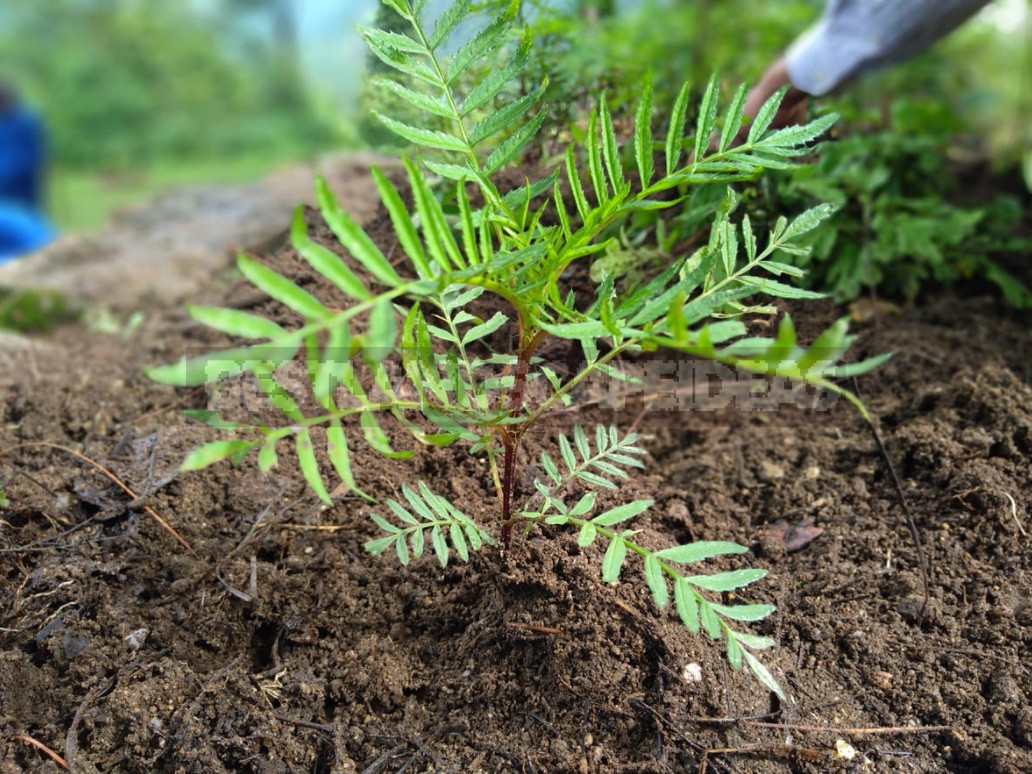
If you have only two beds in the greenhouse, think about how they can be planted just as tightly. To do this, simply draw different options on paper in advance — and in the end you will find the best way for intensive use of your protected ground room.
Well, do all the secrets end with following the landing schedule? Of course not, this is not enough. There are simple agricultural practices that are able to make friends with different plants, so that each culture of this diverse community feels comfortable. It is necessary to correctly choose the mode of watering and fertilizing, as well as protection from pests and diseases.
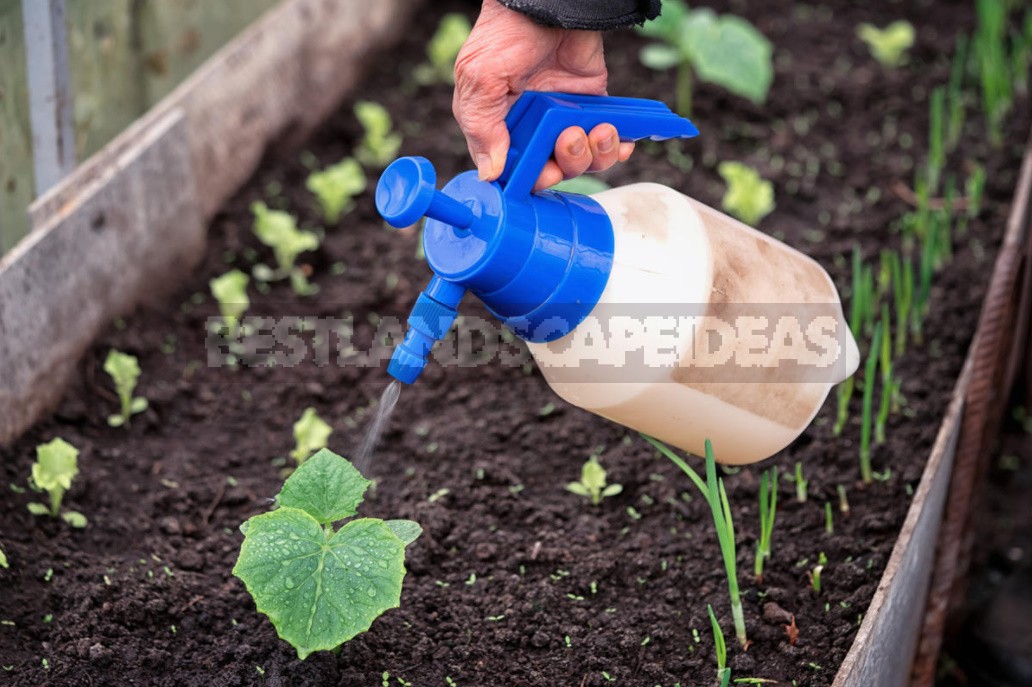


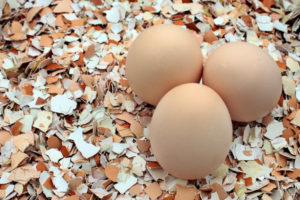

Leave a Reply